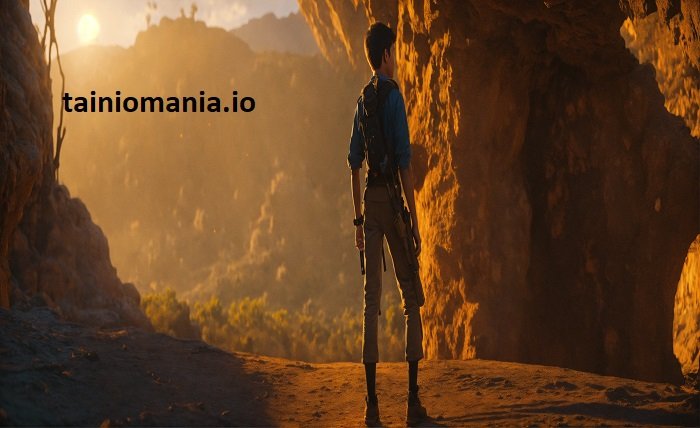The Uncanny Valley movie phenomenon has fascinated and unsettled audiences for years. This concept, rooted in robotics and artificial intelligence, refers to the eerie feeling people experience when they encounter lifelike human replicas that aren’t quite perfect. In the realm of cinema, the Uncanny Valley movie explores this unsettling territory, challenging filmmakers to balance realism and surrealism. This blog post delves into the Uncanny Valley movie phenomenon, examining its origins, impact, and the artistry involved in creating these uniquely eerie films.
1. The Uncanny Valley
The Uncanny Valley movie concept originates from a theory proposed by robotics professor Masahiro Mori in 1970. Mori suggested that as robots become more human-like, they evoke empathy up to a point—beyond which they become eerie and unsettling. This phenomenon, known as the Uncanny Valley, is a central theme in the Uncanny Valley movie, where characters or visuals hover between familiar and alien.
2. The Uncanny Valley in Early Cinema
The Uncanny Valley movie can trace its roots back to early cinema, where filmmakers experimented with lifelike special effects and makeup. Early examples of the Uncanny Valley movie include films like “Metropolis” (1927) and “Frankenstein” (1931), which featured human-like robots and reanimated corpses that evoked an eerie sense of almost-human strangeness.
3. Animation and the Uncanny Valley
Animated films often explore the Uncanny Valley movie phenomenon through characters that look almost human but possess exaggerated or unnatural features. Films like “The Polar Express” (2004) and “Beowulf” (2007) are notable examples of the Uncanny Valley movie in animation, where advanced CGI techniques create lifelike yet unsettling characters.
4. The Role of CGI in the Uncanny Valley
Computer-generated imagery (CGI) plays a significant role in the Uncanny Valley movie, enabling filmmakers to create hyper-realistic characters and environments. However, the use of CGI in the Uncanny Valley movie also presents challenges, as slight imperfections in animation can evoke the eerie sensations associated with the Uncanny Valley.
5. The Impact of the Uncanny Valley on Audiences
The Uncanny Valley movie phenomenon affects audiences differently, with some viewers finding the near-human characters fascinating and others feeling deeply unsettled. The psychological impact of the Uncanny Valley movie is a topic of interest for filmmakers and researchers alike, as they seek to understand and manipulate audience reactions.
6. Iconic Examples of the Uncanny Valley Movie
Several films stand out as iconic examples of the Uncanny Valley movie, including “Final Fantasy: The Spirits Within” (2001) and “A.I. Artificial Intelligence” (2001). These films feature characters and visuals that hover on the edge of realism, creating a sense of unease that defines the Uncanny Valley movie experience.
7. The Art of Balancing Realism and Surrealism
Creating an effective Uncanny Valley movie involves a delicate balance between realism and surrealism. Filmmakers must decide how lifelike their characters should be, carefully adjusting features and movements to avoid tipping too far into the Uncanny Valley. This artistic challenge is a hallmark of the Uncanny Valley movie.
8. Techniques to Mitigate the Uncanny Valley Effect
To mitigate the eerie effect of the Uncanny Valley movie, filmmakers use various techniques, such as stylization and exaggerated features. By intentionally creating characters that are clearly not human, they can sidestep the discomfort associated with almost-human figures, making the Uncanny Valley movie more palatable to audiences.
9. The Future of the Uncanny Valley Movie
The future of the Uncanny Valley movie is closely tied to advancements in technology and animation. As CGI and motion capture techniques improve, filmmakers may be able to create characters that transcend the Uncanny Valley, offering new and intriguing possibilities for the Uncanny Valley movie genre.
10. The Uncanny Valley in Virtual Reality
Virtual reality (VR) is an emerging platform where the Uncanny Valley movie phenomenon is particularly pronounced. VR experiences that feature near-human characters can evoke strong feelings of unease, making the Uncanny Valley movie a compelling area of exploration for VR developers and filmmakers alike.
Conclusion
The Uncanny Valley movie phenomenon is a captivating and complex aspect of modern cinema. By understanding the intricacies of near-human characters and the psychological effects they evoke, filmmakers can create truly unique and memorable experiences. As technology continues to evolve, the Uncanny Valley movie will undoubtedly remain a fascinating and ever-relevant topic in the world of film.
FAQ
1. What is the Uncanny Valley in movies?
The Uncanny Valley in movies refers to the eerie feeling that viewers experience when they encounter near-human characters that are not quite perfect, creating a sense of discomfort and strangeness.
2. Why do Uncanny Valley movies unsettle audiences?
Uncanny Valley movies unsettle audiences because the almost-human characters evoke a sense of unease, as slight imperfections in appearance or movement trigger a psychological response.
3. How do filmmakers create Uncanny Valley movies?
Filmmakers create Uncanny Valley movies using advanced CGI and animation techniques to craft near-human characters. They carefully balance realism and surrealism to evoke the eerie effect associated with the Uncanny Valley.
4. Can the Uncanny Valley effect be avoided in movies?
The Uncanny Valley effect can be mitigated in movies by using stylization and exaggerated features, making characters clearly non-human and thus avoiding the discomfort associated with almost-human figures.
5. What is the future of the Uncanny Valley movie?
The future of the Uncanny Valley movie lies in advancements in CGI, animation, and virtual reality. As technology improves, filmmakers will be able to create more lifelike characters, potentially transcending the Uncanny Valley and exploring new cinematic possibilities.













